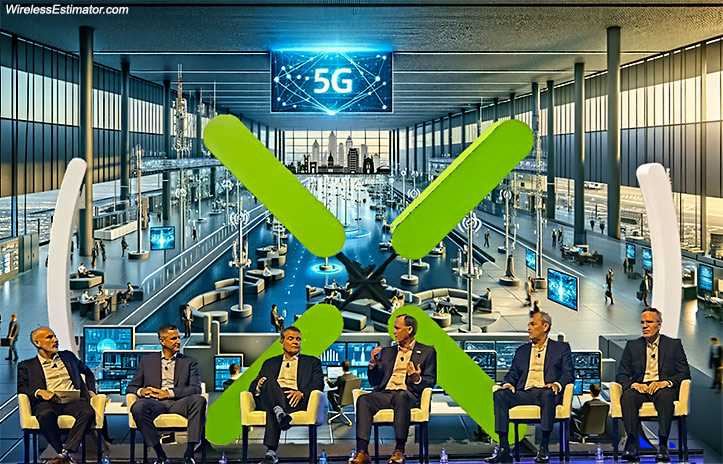
Bud Noel, Executive Vice President at American Tower, second from right, believes this year will be better than 2023 and 2025 will be even better. Pictured during the View From the Top session at Connect X are, from left: Patrick Halley, WIA; Mike Kavanagh, Crown Castle; Ron Bizick, Vertical Bridge; Brendan Cavanagh, SBA Communications; and Ed Farscht, Diamond Communications.
The wireless industry is abuzz with anticipation for the potential of bringing 5G technology indoors. This technology promises faster and more reliable connections, lower latency, and the ability to connect a massive number of devices simultaneously.
During the Wireless Infrastructure Association’s (WIA) View From the Top session on Thursday at Connect X, moderated by Patrick Halley, President and CEO of WIA, industry leaders emphasized the significant opportunities for indoor 5G networks.
Ed Farscht, CEO of Diamond Communications, highlighted the substantial potential for indoor 5G. His company, which acquired in-building wireless network specialist Cheytec Telecommunications in 2019, is positioning itself to capitalize on this growing market.
Brendan Cavanagh, CEO of SBA Communications, echoed Farscht’s sentiments, noting the expanding opportunities in the in-building sector. However, Cavanagh pointed out the need for a clear business model to determine who should fund these networks—whether it be building owners, wireless operators, third parties, or a combination.
The WIA has recognized the importance of indoor 5G, launching an In-Building Forum to connect members with opportunities across various industries, from manufacturing to healthcare. Halley expressed optimism about the indoor 5G market during the keynote event.
Despite a recent period of reduced capital expenditure by carriers and industry, the speakers expressed confidence in the continued growth and demand for bandwidth. Cavanagh and Halley noted the ongoing need for network expansion, with Ericsson projecting data usage to triple by 2029.
American Tower Corporation and Crown Castle reported that only about half of their structures currently support 5G equipment, with significant growth expected in the coming years. Bud Noel, Executive Vice President of American Tower and Mike Kavanagh, COO of Crown Castle discussed the continuous efforts to densify networks and improve 5G deployment.
A key topic at the presentation was the Federal Communications Commission’s lack of spectrum auction authority, which could increase the value of existing infrastructure and emphasize the importance of network densification.
Vertical Bridge CEO Ron Bizick highlighted the growing significance of infrastructure in the absence of new spectrum.
Overall, the industry remains optimistic about the future of indoor 5G, driven by the relentless growth in data consumption and the need for enhanced network capacity and coverage.

















